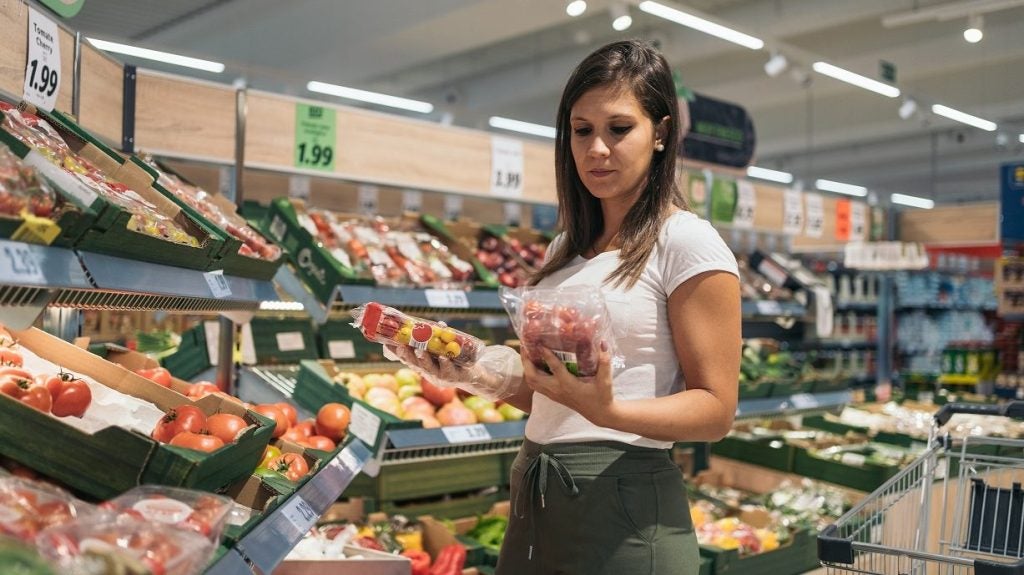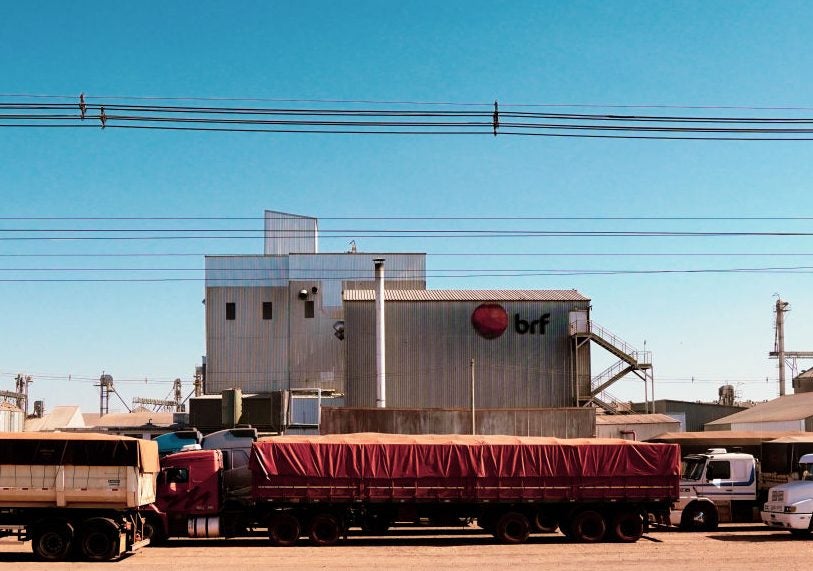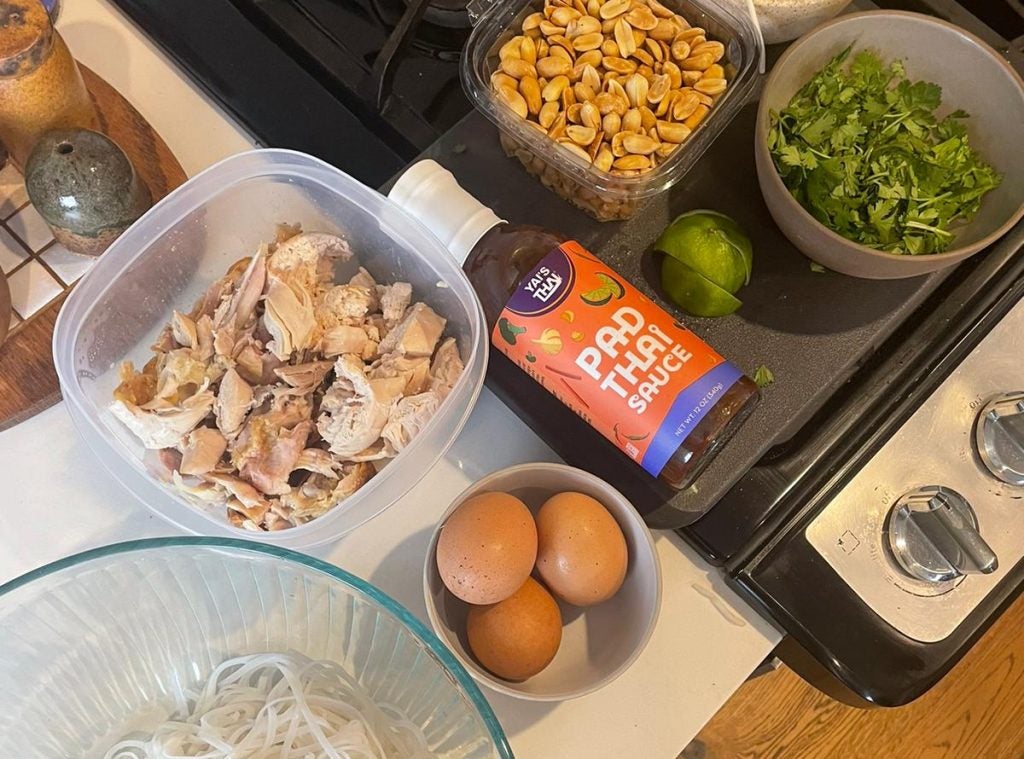Health is likely to be near the top of consumers’ minds in 2024 accompanied by closer scrutiny of ingredients, while there’s still some life left in plant-based foods. Cost and value, however, will continue to dominate shopping behaviour.
Inflation rates may be easing in many markets but prices remain higher year on year. The prospect of deflation as opposed to less severe price increases is a far off phenomena right now.
Meanwhile, historically high interest rates are an added burden on household budgets with all bets on as to when they might start to come down. Supermarket own brands and discount retail channels are expected to continue to benefit, although some industry watchers say pockets of optimism are starting to emerge with increasing wages in select quarters.
“In terms of trade down into Lidl, Aldi and private label, I see those trends carrying on until a bit of a feelgood factor comes back,” Shaun Browne, the UK-based co-head of corporate finance at investment group Houlihan Lokey, tells Just Food.
“In times of uncertainty, consumers tend to stick to the tried and tested and comfort food end of the spectrum rather than try something exotic and new.
“I suspect for the next six months it will still be more of the trading down, more of the cheaper products, more of the own label. And then maybe as the year progresses, things will start to look a bit more positive for the more premium end of the spectrum.”
Plant-based still seen as opportunity
Siobhan Gehin, a senior partner at global consultancy business Roland Berger, agrees with Browne’s hypothesis around “value and price” but, aside from the consumer cost pressures, says health will be a key consideration in 2024.
Covid-19 raised the spectre around health and the trend has largely continued, arguably disrupted by purchasing decisions linked to affordability and demand for key food staples in the cost-of-living context.
Plant-based is part of the health philosophy but 2023 was not a good year for the category, marked by further signs of slowing growth and the demise of the likes of The Meatless Farm Co. and Plant & Bean. The Meatless Farm brand was subsequently bought by a competitor; others weren’t so fortunate.

There’s still a market for plant-based foods, argues Gehin, albeit at much more conservative growth rates than at the turn of the decade.
“There is a little bit of a back-to-basics feel and smaller brands have really struggled in anything in the niche and plant-based food has fallen off a cliff or come out of its big bubble,” she says.
“Having said that, I still do think there’s a real thing about healthiness, but maybe not quite the same perspective as during Covid. There's a whole rise in consumers being really well informed about nutrition and longevity. Everyone wants to know what's in it.
“Companies will have to be a lot more mindful of the fact that consumers are more informed, curious and care more.”
Gehin suggests greater awareness and scrutiny of ingredients lists was a downside to some plant-based foods, opening up the argument around transparency by manufacturers across all categories.
“I still think the reasons that consumers rejected it were price, taste and a long list of ingredients. I think for players that can get that right, there is a really big market,” she says.
“People are now scrutinising the ingredients more and I think that’s one of the reasons plant-based food came a cropper because for food that was meant to be healthy a lot had a list of ingredients as long as your arm.”
Like Gehin, Houlihan Lokey’s Browne shares the view that plant-based foods still have legs but with the same dialled down growth trajectory.
However, Cyrille Filott, a global strategist for consumer foods, packaging and logistics at Dutch investment bank Rabobank, while echoing those positive undertones, suggests a “whole big group of consumers is lost forever because they tried it, they didn’t like it and they are unlikely to come back to the category anytime soon”.
At one point, we will start to see growth again in the plant-based category.
Cyrille Filott, Rabobank
Filott envisages growth rates in the category will be “much more moderate than they were in 2020 or 2021” but with demand largely resting on the younger age bracket. However, he acknowledges that the quality and taste of plant-based products has improved in recent years.
“At one point, we will start to see growth again because there is a group of consumers that are interested in these types of products,” Filott explains. “Some of the younger generation might be more interested in products like this for various reasons – nutrition, sustainability and animal welfare – but it’s very gradual. It’s not the big change that everybody expected two to three years ago.”
Browne anticipates another “bad” year for the category, although he says growth will likely pick up as consumer demand comes more into balance with supply.
“As a result of the rapid growth from a very low base, it encouraged a massive number of new entrants into the market. Everybody was piling into it because it looked like a pot of gold,” Browne explains.
“You’ve actually seen a bit of a tilt back and the long-term structural growth of meat-free has reversed slightly in recent months and I think that is a result of too many players entering the market. The demand-supply imbalance will start to get back into balance again and then I think you’ll see the growth return.”
“Holistic” picture of health
Fortified foods could well see an uptick in 2024 based around the health-and-wellness consumer trend, as well as the whole aspect of transparency, sustainability and “provenance”, Gehin adds with an accompanying caveat.
“There’s still a large tranche of consumers that can only afford the most basic products but, for those who have choices to make, they'll increasingly be scrutinising labels more and holding consumer goods companies and retailers up to a higher standard of provenance.”
Nick Cooney, a managing partner at US-based better-for-you investor Lever VC, says people want to be “healthier” these days, searching out foods to potentially boost longevity and also perceived to be good for mental health.
People are looking at better-for-you as part of a holistic solution to having more wellness.
Nick Cooney, Lever VC
“People are looking at better-for-you as part of a holistic solution to having more wellness. It could be fortified foods or whole foods that have natural components like pomegranate,” Cooney suggests. “Formulation is part of it. I think another one is transparency and labelling.”
Browne at Houlihan Lokey identified vitamins, minerals and supplements as being “really hot at the moment” as consumers seek out ways to “preserve their health”.
Processed foods will face “some slight headwinds”, he added, a view not entirely shared by Rabobank’s Filott.
The debate around ultra-processed foods and their impact on health continues to swirl but, on the prospect of more consumers turning away from UPFs to those less processed, Filott says: “We haven’t seen it just yet but it’s something to look for. I’m not entirely convinced but it is something that is definitely on the minds of the consumers.”
Brighter picture for premium?
Many consumers will likely remain stretched in 2024 to varying degrees depending on the intensity of inflation in different European markets, Filott believes, although consumers benefiting from wage increases might be encouraged to spend more on premium foods, treats and indulgence.
“The affordable part of the spectrum of the shelf will continue to do well because I don’t think all consumers will recover,” he explains.
“We might see a slight recovery into the premium end of products. What we saw after the great financial crisis is something that we call the hybrid consumer – a lot of spending on affordable value products but occasionally splurging on the premium side leaving the middle out. The middle part might continue to struggle, whereas the top and the bottom might continue to do well – the hourglass shape.”
In terms of channel demographics, Gehin expects food retail, food-to-go outlets and quick-service restaurants situated at petrol forecourts to play an increasing part in consumer shopping behaviours with the rise of electric vehicles, and the time spent at those locations charging their cars.
“The other big channel thing is continuing convenience, forecourt retail and then this merging point between eating out versus eating in, food on-the-go or food for tonight or snacks,” she says.
“Forecourt retail is definitely a channel that's on the rise everywhere with the advent of electric vehicles, and consumers are spending longer.”
Clouds on horizon for pet food
Stepping aside from consumer foods, pet food has been an in-demand category accelerated by people buying pets as a companion during Covid. The so-called humanisation trend has also taken root with households treating animals more like a family member and often willing to pay premium rates for food, too.
That has led to new product innovation around plant-based and the fresh components, along with the potential for cell-cultured pet food.
However, it’s a growth trend that only has so much runway with some pullback likely, Browne predicts, emphasising that it will not be a “dramatic fall off the cliff moment” for the pet-food segment.
Affordability in the context of the cost-of-living crunch is one factor put forward by Browne.
Some people may have decided a pet is not for them, while breeding rates have fallen from the lofty pandemic highs, he suggests.
Providing a balanced view, Browne adds: “The humanisation of pets is a medium-term trend that isn’t going to stop anytime soon. I’ve been very bullish on the pet-food market for a number of years and at some stage, I'm starting to turn, not that I don’t believe premiumisation will continue. I do.
“You’re going to start seeing the overall addressable market of pets potentially start to go into decline for the first time in a very long time.”
“Jury out” on weight-loss drugs
It would be remiss not to mention the weight-loss or appetite-supressing drugs emerging in the US and the potential impact on food consumption, which has largely been brushed off by some of the major names in the industry so far.
Browne says: “If you can just simply take a pill to get rid of obesity that may encourage you to eat more confectionery and more high sugar, fat and salt products.”
While Cooney at Lever VC argues “there’s a lot of hype about how much it’s going to affect food” because of the time spent on the drugs, they might just accelerate the trend of people cutting back on sweet treats, for instance.
Filott concludes: “The jury is very much still out. We’re only six months or a year into this and we don't necessarily know whether this is temporary or structural in terms of the changes in the lives of people.”
















